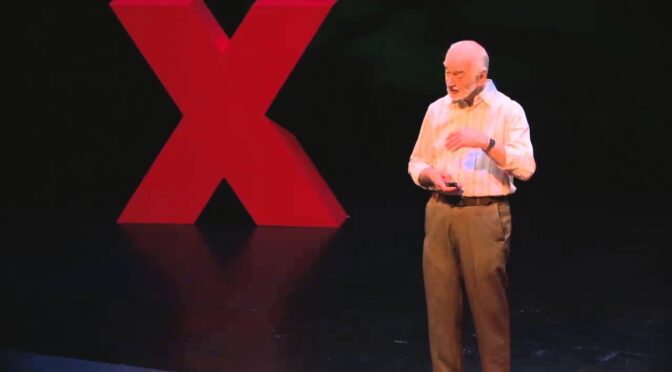This article is based on a video posted on TEDx Talks channel, titled “The Emotional Lives of Animals and Humans” by Jaak Panksepp, a renowned neuroscientist. The video gets into the intricate relationship between human and animal emotions, arguing that understanding animal emotions can shed light on human emotional experiences.
Contents
- The Importance of Emotions in Life
- Emotional Systems in Animals
- Primary Emotions and Their Feelings
- The Role of Neurochemistry in Emotions
- New Treatments for Emotional Disorders
- The Moral Responsibility Towards Animals
- The video
The Importance of Emotions in Life
Jaak Panksepp starts his talk by emphasizing the role of emotions in both art and life. He argues that emotions serve as indicators of what supports or detracts from our survival. Panksepp’s journey into this field began when he was a student in electrical engineering but became interested in the emotional tragedies he witnessed in a psychiatric hospital. This led him to shift his focus to neuroscience as a means to understand how we feel (and it’s fascinating that he started in a completely different field).
Emotional Systems in Animals
Panksepp discusses the emotional systems in animals, stating that even chickens have emotions. He mentions that the emotional systems in animals are very similar to those in humans. He argues that understanding the emotions of animals can help us understand our own emotions. Panksepp and his team have mapped out sadness systems in chickens, guinea pigs, and humans, and found them to be remarkably similar (which is quite surprising for many).
Primary Emotions and Their Feelings
The talk identifies seven basic emotional systems, termed as Primary Emotions. These include SEEKING, which is associated with enthusiasm; FEAR, which is linked to anxiety; LUST, which is related to passion; CARE, which is tender and loving; PANIC, which generates loneliness and sadness; and PLAY, which brings joy. Panksepp explains that these emotional systems are never neutral; they either feel good or bad to the animal or human experiencing them.
The Role of Neurochemistry in Emotions
Panksepp discusses the neurochemistry behind these emotional systems. For example, he talks about how opioids in the brain mediate feelings of love and attachment. He also mentions that the molecule that releases milk from the breast also plays a role in reducing the panic response. This leads him to conclude that the physiology of motherhood is essentially the physiology of love (which is a thought-provoking idea, to say the least).
New Treatments for Emotional Disorders
Towards the end of his talk, Panksepp discusses the potential for new treatments for emotional disorders like depression and anxiety. He mentions GLYX-13, a molecule that has shown promise in phase two FDA-approved human testing for its antidepressant effects. This molecule was discovered by taking animal emotions seriously, marking it as potentially the first psychiatric medicine developed from human knowledge rather than serendipity.
The Moral Responsibility Towards Animals
Panksepp concludes his talk by urging people to take a different attitude towards animals. He argues that we are brothers and sisters under the skin with all other animals, and understanding them will help us understand ourselves. This, he believes, places a moral responsibility on us to treat animals with the respect and care they deserve.
The video serves as a compelling argument for the interconnectedness of human and animal emotions, and the potential for groundbreaking treatments for emotional disorders. It also calls for a moral and ethical reevaluation of our treatment of animals, emphasizing that understanding their emotions can offer valuable insights into our own emotional lives.

